FOUNDATIONS REVEALED COMPETITION ENTRY

Flowers for Napoleon
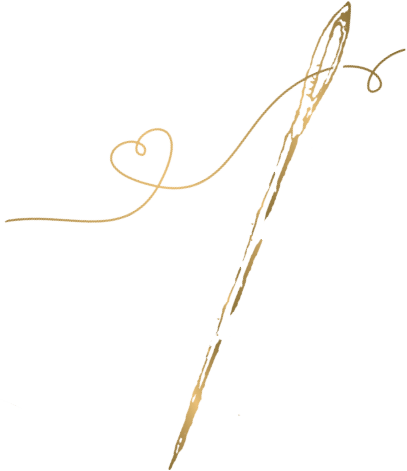
Outline the story …
My dream project was recreating an 18th-century floral embroidered waistcoat and the ‘Nature’ theme was a perfect opportunity. I wanted to create a historically inspired garment that could be worn over my modern clothing. My final pattern draws from extant 18th-century menswear and women’s riding habits.
The extant waistcoat this garment is based on is from an 1810 Napoleonic Court Suit. As I embroidered, I found myself thinking about impermanence, gender conventions, and flowers. Few people in western history embody our concept of stereotypical masculinity more than Napoleon Bonaparte; whether you cast him as a heroic revolutionary or a tyrannical warlord, he epitomises power through leadership and strength. Yet, at least one of Napoleon’s statesmen wore a cream silk and purple velvet suit covered with lace and pink flowers.
Today, floral clothes (especially pink and purple ones) are often considered unmasculine, or girly. However, flowers are in no way ‘naturally’ feminine. Most flowers are gloriously intersex, having both stamen (male) and pistil (female) parts. As flowers themselves queer gender expectations, they seemed particularly fitting for an outfit that explores both traditionally masculine and feminine design.
In art, flowers are associated with impermanence and change, which also seems poignantly fitting. Which conventions will exist around flowers in 213 years time?
Post global warming, which flowers will remain?
Whatungarongaro te tangata, toitū te whenua.
(As people disappear from sight, the land remains)
a traditional whakatauki (Māori proverb/saying).
Outline the construction…
My aim was to make a close-fitting, embroidered waistcoat with an historically inspired silhouette, that I could wear over modern clothing.
Referencing an 18th-century women’s riding habit, I enlarged the pattern and altered the dimensions to match my own. I redrafted the bottom half of the pattern so it resembled a waistcoat rather than a bodice; I used men’s waistcoat diagrams and my inspiration image as a guide. I then lowered the apex and moved the centre-front dart into the shoulder so it was no longer in the middle of the front embroidery panel. Dart manipulation is a modern technique, but the ease of work it allowed was worth the concession in my opinion. I then made multiple mock-ups to adjust the style and fit.
Tracing an embroidery motif from my inspiration image, I created the front panel design. Using a pencil and tracing paper I copied my design and transferred it onto fabric. The embroidery took three months to complete, averaging two hours work per day.
The waistcoat fabric is cotton sateen interlined with linen. It is both machine- and hand-sewn, and entirely hand-finished – the hand-sewn buttonholes were especially terrifying, as I had never done them before.
Challenges included keeping the embroidery symmetrical, a tiny budget (the materials cost under $45USD), and learning a plethora of new skills, including adapting patterns from small-scale historic garment diagrams. However, the biggest challenge was managing this within the restrictions of my chronic illness.

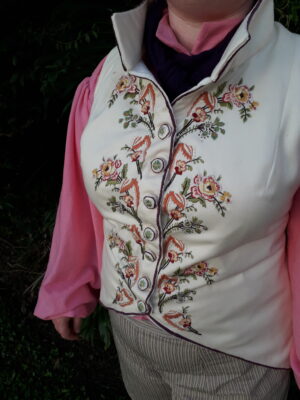
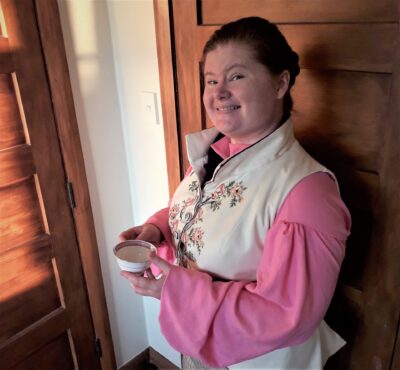
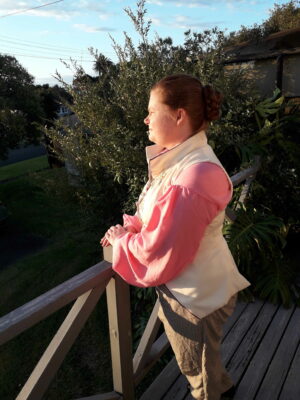
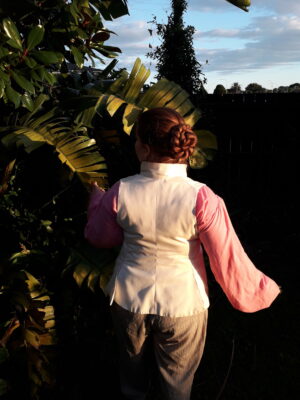
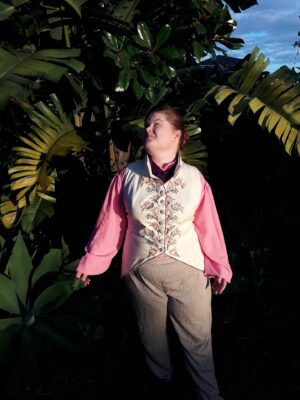
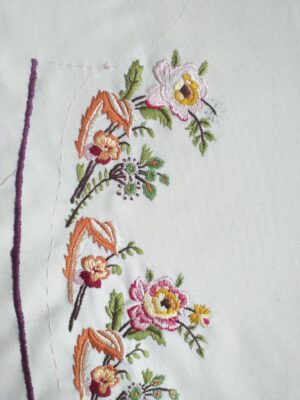
The embroidery is amazing, well done!
Every so impressed at your embroidery as I am sure everyone will be. But that you then turned it into a gorgeous waistcoat it wonderful.
It is lovely to see the historical techniques are lovely to see as well.
I love this embroidery and it inspires me to want to make a project with covered buttons!